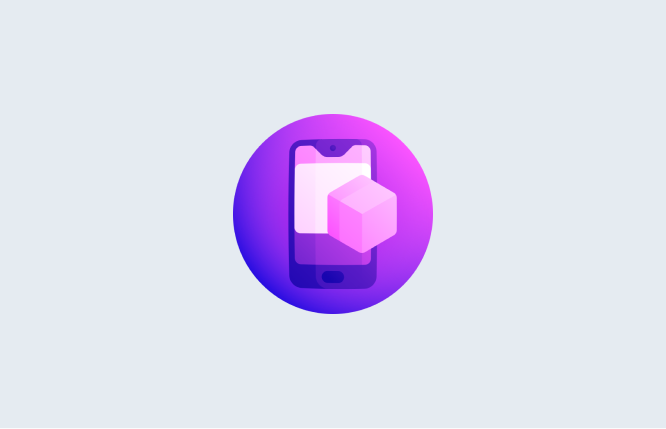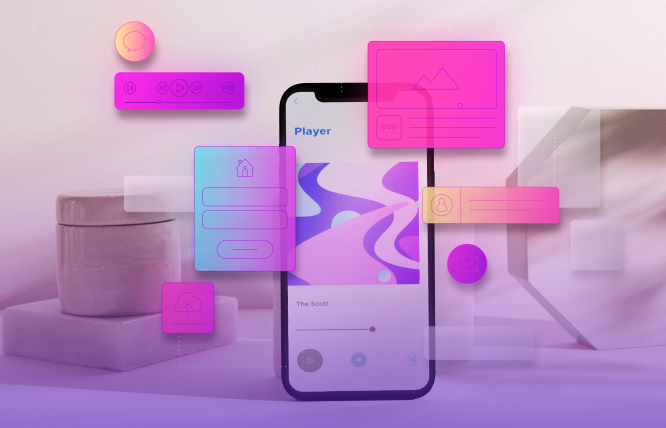There are a number of technological advancements in the current era that are set to change the way app development will work in the future. In this blog you will learn:
- All the top trends in app development
- The impact of these trends
- The future of app development and green app development
In the current digital era, technological advancements are constantly changing the landscape of businesses and how they get things done. One of the most prominent changes in the current era is how app development is evolving to keep up with new technologies.
With foldable phones to 5G technology becoming prevalent, it is a natural progression for app development to mould itself in a way that can accommodate these changes and leverage these advancements to provide the best value.
In this article we will be discussing the app development trends in 2024 and what the future holds for this market.
The Growth Of The Global App Development Market
The mobile app development market is growing at a fast pace and this number is predicted to increase in the coming years. According to Statista, following are some of the key highlights of the app development market and its growth in the coming years:
- The total revenue generated from the global app development market reached $420.80bn in 2022.
- The annual growth rate of the global app market is 8.83%, forecasting a market value of $673.80bn by 2027.
- In-app purchase is projected to surpass $149.90bn in 2024.
- The average revenue per download currently is expected to amount to US$1.79.
These stats clearly show that the app development market is set to be a huge contributor in the global market. Let’s dive into the expected trends for 2024 in the app development space and how these trends can set the trajectory for market growth.
App Development Trends in 2024
2024 will be bringing some major changes to the app development trends and these changes will dictate the way businesses look at hiring app developers and create their applications.
- Serverless Architecture
Technological advancements are geared towards providing us efficient ways to complete processes. Under the same principle, we are expecting to see a huge change in how developers will work on applications and Serverless Architecture plays an important role in this.
Serverless architecture allows developers to focus solely on writing code without the burden of managing servers. Leveraging cloud services, serverless computing offers a scalable and cost-effective solution to your app development needs.
This not only streamlines the development process but also reduces infrastructure costs. With serverless architecture, developers can drastically improve your time-to-market and deploy applications more rapidly, freeing up time and resources for innovation.
- Cross-Platform Development
Previously we were part of an era where iOS and Android development were considered the most important app development platforms. A vast majority of developers had specialised in these two languages and offered great solutions to businesses in the past. The paradigm, however, has now shifted and businesses are looking for a way to get the maximum value with less resources involved. This is where cross-platform development comes into play.
Developers are adopting frameworks like React Native and Flutter to create apps that seamlessly run across multiple platforms. This approach not only streamlines the development process but also significantly reduces time and resources by allowing the reuse of code across different operating systems.
As the demand for apps on various devices continues to surge according to recent app development trends, cross-platform development proves to be a strategic choice for both developers and businesses alike. In 2024, the trend towards cross-platform development is set to intensify, empowering developers to develop and create high-performing applications that cater to multiple platforms and technologies.
- 5G Technology
Wireless technology has been evolving over the years. With the fifth generation of wireless technology rapidly being adopted, businesses will see a significant difference in how their applications behave with 5G.
The fifth generation of wireless technology brings unparalleled speed, low latency, and high bandwidth, paving the way for a new generation of applications. App developers have already started leveraging the capabilities of 5G to deliver immersive experiences. 5G is enabling developers to create applications that offer real-time interactions, and data-intensive functionalities. Whether it’s augmented reality (AR) applications, high-quality video streaming, or latency-sensitive gaming apps, 5G’s network speeds and low latency are set to improve user experience.
- Wearable Mobile Development
From Fitbit to Apple watches, the wearable device market is growing at a steady pace. According to Global Newswire, the wearable technology market is set to reach a value of $380.5 billion by 2028. This means that developers will be working on applications that are specifically designed for wearable tech.
Wearable devices, ranging from smartwatches to fitness trackers, are becoming ubiquitous, and developers are keenly focusing on crafting applications that leverage their unique features. These apps extend beyond traditional functionalities, offering personalized health monitoring, real-time notifications, and interactive experiences tailored to the compact screens of wearables. From enhancing fitness regimes to providing instant updates, wearable apps are reshaping user interactions.
In 2024, the trend in wearable is expected to thrive, with developers increasingly exploring innovative ways to harness the capabilities of these devices and deliver a more connected and personalized user experience.mobile app development
- Artificial Intelligence and Machine Learning
With the rise of AI and machine learning making waves in the current landscape, it is common to see mobile app developers leveraging this technology to make their processes streamlined and efficient.
From recommendation engines in content apps to intelligent chatbots in customer service applications, the possibilities are vast. AI and ML not only streamline processes but also empower apps to make data-driven predictions, automations, and improvements over time.
- Cloud Based App Development
Businesses have been adopting cloud-based infrastructure and computing to help them streamline their processes without the need for added infrastructure. As cloud computing evolves, app developers are using the technology to improve their development process.
Cloud computing offers developers a scalable and flexible environment to build, deploy, and manage applications, reducing infrastructure complexities. With cloud services like AWS, Azure, and Google Cloud, developers can harness powerful resources, ensuring optimal performance and reliability for their applications.
This approach not only facilitates seamless collaboration but also enhances accessibility and facilitates efficient resource utilization.
- On-Demand Mobile Apps
People are looking for convenience and businesses are aiming to provide it to their users. This is where the rise of on-demand applications come into play. On-demand apps leverage real-time data, location tracking, and seamless payment integration to deliver efficient and convenient services.
The trend towards on-demand app development is fuelled by the growing demand for immediacy and user-centric experiences. As we enter 2024, the on-demand app ecosystem is set to expand further, with developers innovating across diverse sectors to meet the evolving needs of consumers seeking instant access to goods and services in an increasingly connected world.
- IoT Integrations
IoT integrations enable apps to seamlessly connect and communicate with smart devices, creating a network of interconnected functionalities. From smart homes and industrial automation to healthcare and agriculture, IoT-equipped apps empower users to monitor, control, and optimize their environments.
This trend is characterised by the interplay of data from sensors, actuators, and connected devices, fostering real-time decision-making and automation. As we advance into 2024, the momentum of IoT integrations in app development is anticipated to surge, driving innovation across industries and promoting efficiency, sustainability, and user engagement.
Developers are increasingly exploring ways to harness the vast potential of IoT, creating applications that not only enhance user experiences but also contribute to the broader ecosystem of interconnected devices.
- Progressive Web Apps (PWAs)
Simplicity is paramount for users when we talk about improving the experience. While applications offer a significant level of efficiency, this is taken a step further with Progressive Web Applications (PWA).
PWAs combine the best of web and mobile applications, offering the speed and accessibility of a traditional website with the immersive functionalities of a native app. These applications are designed to be fast, responsive, and able to work offline, providing users with a seamless experience across various devices and network conditions.
With features like push notifications and the ability to be installed directly from a browser, PWAs bridge the gap between web and native apps. The trend towards PWA development is set to grow in 2024 with developers leveraging the technology to create cross-platform applications that prioritise performance, responsiveness, and user engagement.
- Mobile Commerce (mCommerce)
According to Tidio, 187.5 million users are expected to be active mobile shoppers in 2024. This opens a large audience for businesses that are looking to promote their products and drive in revenue.
Mobile commerce (m-commerce) has emerged is transforming the way consumers engage with businesses. Mobile commerce applications facilitate convenient and secure transactions, enabling users to shop, make payments, and manage their accounts directly from their smartphones. With features such as mobile wallets, one-click payments, and personalised recommendations, m-commerce apps offer a tailored and streamlined shopping experience.
The trend in mobile commerce is characterized by the fusion of technologies like augmented reality for virtual try-ons and artificial intelligence for personalized product recommendations.
- Voice Functionality
Voice-activated applications leverage technologies like Natural Language Processing (NLP) and voice recognition to interpret user commands and queries, enabling a more intuitive and efficient user experience. From virtual assistants and voice-activated commands to voice-controlled navigation, this trend is fostering a new era of accessibility and convenience.
The integration of voice functionality in apps is anticipated to expand, with developers increasingly exploring innovative ways to incorporate voice interactions into diverse applications. This not only enhances accessibility for users but also unlocks possibilities for creating more immersive and engaging experiences, driving the evolution of user interfaces in the ever-evolving landscape of app development.
- Apps For Foldable Devices
As foldable devices redefine the form factor of smartphones and tablets, app developers are adapting to leverage the unique capabilities of these innovative gadgets. Foldable screens offer users a dynamic, multi-modal experience, allowing them to seamlessly transition between different layouts and orientations. App developers are embracing this trend by creating applications that optimize content presentation for both folded and unfolded states.
Whether it’s multi-window functionalities, enhanced multitasking, or innovative user interfaces, the development focus is on maximizing the potential of foldable screens. As we progress into 2024, the trend in app development for foldable devices is expected to flourish, with developers increasingly innovating to deliver engaging, flexible, and immersive experiences tailored to the evolving landscape of foldable technology.
- Edge Computing
Edge computing involves decentralized data processing, where computations are performed closer to the source of data generation, reducing latency and enhancing real-time capabilities. App developers are leveraging edge computing to create more responsive and efficient applications, particularly in scenarios where quick decision-making and low latency are critical.
Whether it’s in IoT applications, augmented reality experiences, or content delivery, the adoption of edge computing allows developers to deliver faster, more reliable services. As we venture into 2024, the trend towards edge computing in app development is poised to grow, empowering developers to build applications that capitalize on the benefits of localized data processing, ultimately enhancing performance and user experiences in an increasingly connected world.
- Decentralised Apps (dApps)
Built on blockchain technology, DApps offer a decentralized and transparent infrastructure, eliminating the need for intermediaries. These applications often run on peer-to-peer networks, providing users with increased security, privacy, and control over their data. With smart contracts, DApps enable trustless and automated transactions, fostering a new era of digital interactions.
Developers are exploring decentralized platforms like Ethereum and Binance Smart Chain to create applications spanning various domains, from finance and governance to gaming and social networking. In 2024, the trend towards decentralized app development is expected to intensify, ushering in a paradigm shift where users have greater sovereignty over their digital experiences, and developers embrace the principles of decentralization to build more secure, transparent, and user-centric applications.
- Mobile Wallet and Payments
Mobile wallets and payments have become integral components, transforming the way users manage transactions and financial activities on their smartphones. Mobile wallet applications provide a secure and convenient platform for users to store payment information, make seamless transactions, and even manage loyalty programs.
With the integration of technologies like Near Field Communication (NFC) and biometric authentication, mobile payments have become not only secure but also quick and effortless. Developers are focusing on enhancing user experiences through innovative features, such as contactless payments, peer-to-peer transfers, and real-time transaction notifications.
The trend in mobile wallet and payment app development is set to continue, with a growing emphasis on security, interoperability, and the integration of emerging technologies to offer users a frictionless and versatile financial experience on their mobile devices.
Future of App Development
With the advancement of technology and the change in perception of how users are viewing organisations, there are certain aspects that developers will need to keep in consideration. This leads us into one of the major changes in the future of app development.
Green App Development
In recent years, environmental consciousness and corporate social responsibility have played a huge role in how businesses undergo their daily processes. Green app development has emerged as a significant trend, reflecting a commitment to sustainability and minimising the ecological footprint of digital technologies. Developers are adopting practices that prioritize energy efficiency, reduced resource consumption, and eco-friendly design principles. Whether it’s through low-power modes, renewable energy sourcing, or carbon offset initiatives, green app development seeks to align digital innovation with ecological responsibility.
As we progress into 2024, the trend towards green app development is expected to grow, with developers increasingly integrating environmentally friendly practices into their workflows, ultimately contributing to a more sustainable and eco-conscious digital landscape.
Conclusion
We have entered an era where the way applications are developed is drastically changing. With new technology and more efficient ways of development, people are looking towards leveraging these technological advancements and app development trends to benefit themselves.
The paradigm is shifting and it is important for businesses to start adapting these changes or risk being left obsolete.
Frequently Asked Questions
Have questions or feedback?
Get in touch with us and we‘l get back to you and help as soon as we can!




